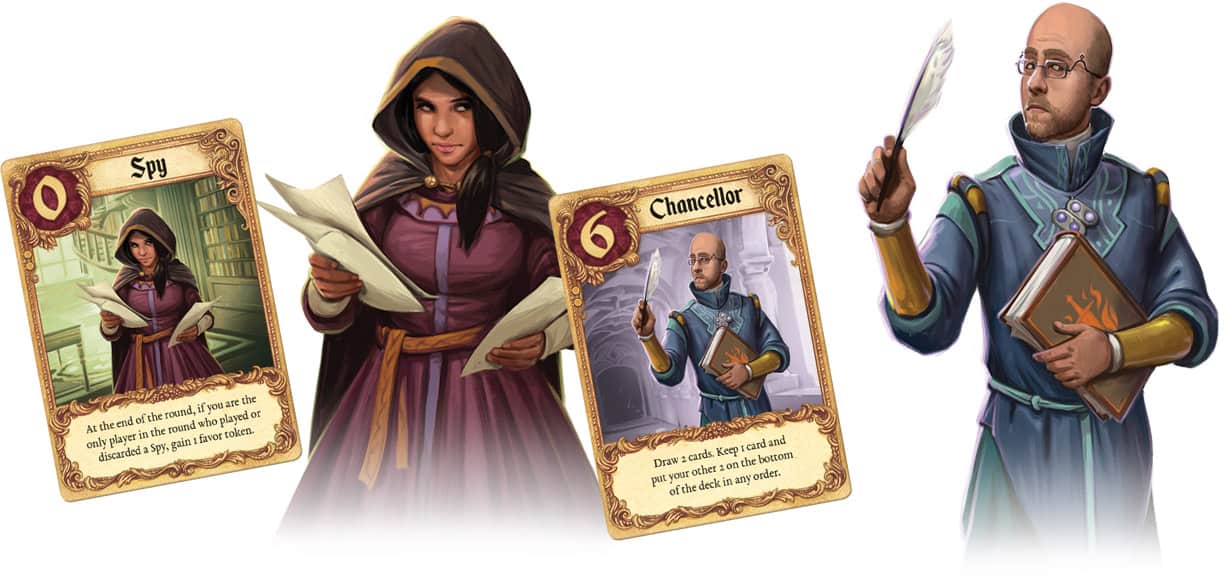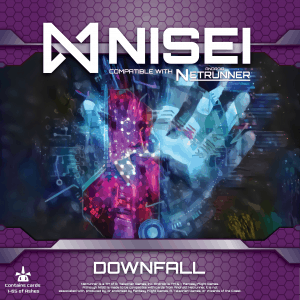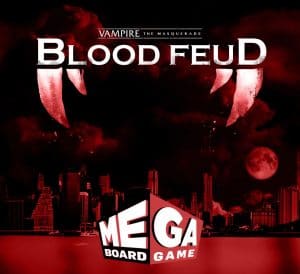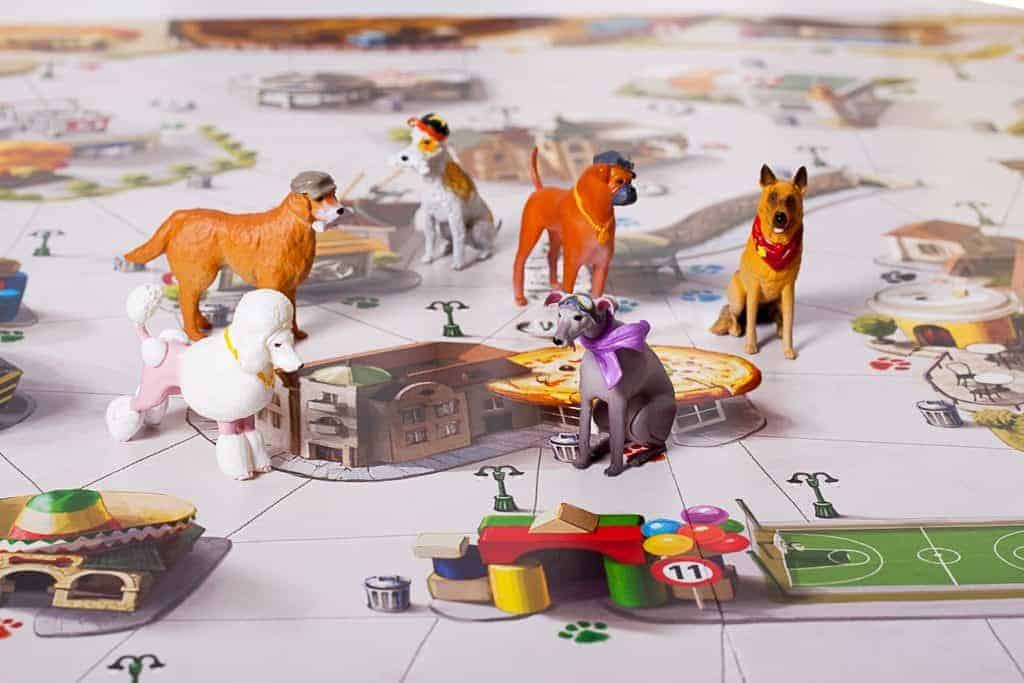Quinns: Good morning. Our top story this week? Shut Up & Sit Down has a new staff writer! Everybody, please give the warmest of welcomes to Ava Foxfort. Ava, will you please step in front of the class and introduce yourself?
Ava Foxfort (they/them): Hi everybody! You may have seen me in the comments or the forums, and I have to say I’m utterly thrilled to be here. Shut Up & Sit Down has been one of my favourite imaginary places for a very long time, and I’m delighted to be part of it.
Quinns: Ava, please kneel. I dub thee… a News Knight of the Realm.
Ava: I guess I’d better go slay some news.
Love Letter is a tiny bag of magic, so I’m nervous to hear the new version has an amended roster of characters. It’s like someone telling me they’ve reinvented cheese on toast, without telling me what they’re using instead of cheese. That said, Z-Man games is telling us that the Chancellor lets you hide cards of the bottom of the deck, which is exactly the sort of mischief that could spice up this delightfully taut set of cards, where a little knowledge could make a huge difference.
Quinns: We’ve got an incredible story here. Superlative card game Android: Netrunner was recently discontinued by Fantasy Flight after a dispute about the license. It seems that for some fans, this was a call to action.
Project Nisei (a name which is both a reference to the game and the excellent acronym “Nextrunner International Support & Expansion Initiative”) is a fan-run organisation that provides both game night kits and new expansions. Their first set of 60 new cards, titled Downfall, is now available as a product or donate-what-you-can print’n’play.
Looking at these efforts leaves me a little speechless. As you’d expect from hardcore Netrunner players, these cards not only look well-considered, the art is really pretty strong!
Ava: I struggled to get very far with Netrunner, despite it obviously being a rich set of possibilities, but I think it’s lovely when fans come together to make the impossible real. This is a real labour of love and it shows.
Quinns: It does. It actually makes me feel guilty that my response isn’t to immediately buy it and return to my nearest Netrunner meetup? But then, a collectible, competitive game isn’t just a game, it’s a scene, and to me personally that scene was a part of my life in 2016-2018. I mean, damn, I’ve already done a eulogy for the thing! You can watch my “Death of Netrunner” talk from SHUX 2018, a sexy panel name that I now regret. This game isn’t dead, it’s just… my relationship with it has come to an end for the time being. And while that’s sad, it’s not something that I feel I should fight.

Ava: Avery Alder, creator of Monsterhearts, has collected together two of her older ‘solo, pervasive games’ with two new ones, and released them together as Variations on Your Body. These odd little games ask you to reimagine your life with fantastical weirdnesses: turning you into a sparrow or a witch. These are beautiful, fragile pieces about bravery and healing and kindness, and they break my heart. I firmly believe in treating life with the sort of gentle animism this encourages. I cried the first time I read about the suggestion to rehabilitate yourself from depression by summoning a ghost to haunt your bones.
Quinns: Have you played any of them?
Ava: I’m not sure where the line is between ‘playing’ a game like this and ‘holding it in the back of your mind’. I first read Brave Sparrow as I was digging into my trans identity, and there was something magic and hopeful in taking heart in passing birds and feathers. But I never collected the feathers as the game suggests, even if someone once posted me one. A lot of role playing games fall into the category of ‘I love thinking about this, but who would play with me?’ Quite sad to think the answer might be ‘not even me’.
Quinns: I’ve had the poor fortune to play a few board games with people who remind me of me. It was AWFUL
Quinns: Oh, this is fascinating! Vampire: The Masquerade – Blood Feud is the world’s first attempt to publish a megagame (in this case, it looks like a Megagame design called Night Falls) as an ordinary boxed product. Weirder still, it purports to play 4-32 players and 1 or 2 “storytellers”. Could the same design really work with 4 players as well as with 32?!
In a nutshell, the game will feature multiple tables in multiple rooms, with players taking roles in various vampire clans or human institutions. The devil will absolutely be in the detail of how much Everything Epic games can replicate the magic created by dedicated mega-gamers around the world.
Ava: I’m really interested to see what support it has for the storytellers. In my experience megagames live and die on the tempered flexibility of the moderators, so I’m curious how a box and kit might help out the people making the magic happen.
Quinns: Right? But if Blood on the Clocktower taught me anything, it’s that I’m very interested in the possibilities of board games with dedicated, playful overseers.
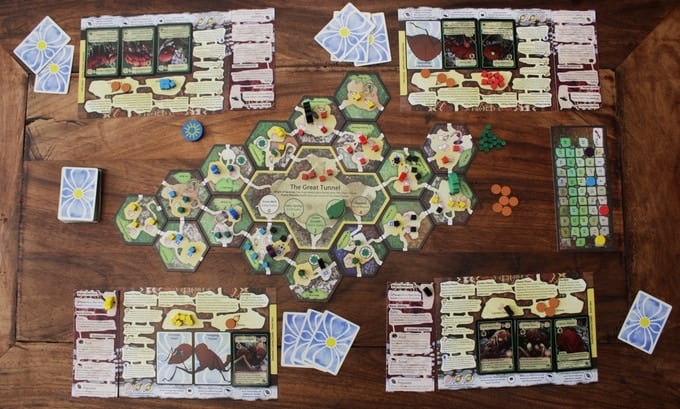
Ava: A new expansion for March of the Ants is burrowing into the soil of Kickstarter meadow. Eclipse cut Twilight Imperium in half, and this (significantly less intergalactic) 4X game does the same job to Eclipse. As ants pour out across a set of undergrowth-clad hexes, you scrounge resources, wage war, evolve new abilities, and jump through “wormholes”. I think it’s worth it for that pun alone. Squeezing that much drama into a tight hour or two is a delightful trick, and I’m glad they’ve earned enough support to fund a reprint of the base game, so anyone can jump in and give it a try.
And the expansion is full of new ants! As well as burrows for your larvae to be put to work in. I’m unsure how necessary the extra bundle of cards will be, but I’m thrilled the game is getting in front of more eyes, as I think it’s a bit of an overlooked gem.
Ava: Ryan Laukat’s back on kickstarter again, with something a little smaller scale, Roam. Red Raven games has now produced a long run of utterly beautiful games that have always fallen a little flat with me. This looks nice and cosy though. A grid of landscapes surrounded by character cards that let you play pieces into very specific shapes. I think it might be a little like Tash-Kalar, a pattern based battling game, mixed with the area control of something like El Grande. That’s actually quite a tempting prospect.
Quinns: I’ve not actually played anything from Ryan Laukat. What I hear about all of his designs is that they’re interesting and human but perhaps not the tightest of things? Is that fair?
Ava: They’re always gorgeous, but seem to have so many rough edges smoothed off that there isn’t enough friction to hold me?
Quinns: Title of your sex tape! Kind of. Not really
Ava: I could rewrite the sentence-
Quinns: No, don’t worry, it didn’t work
Ava: Title of your sex tape?
Quinns: OHO!
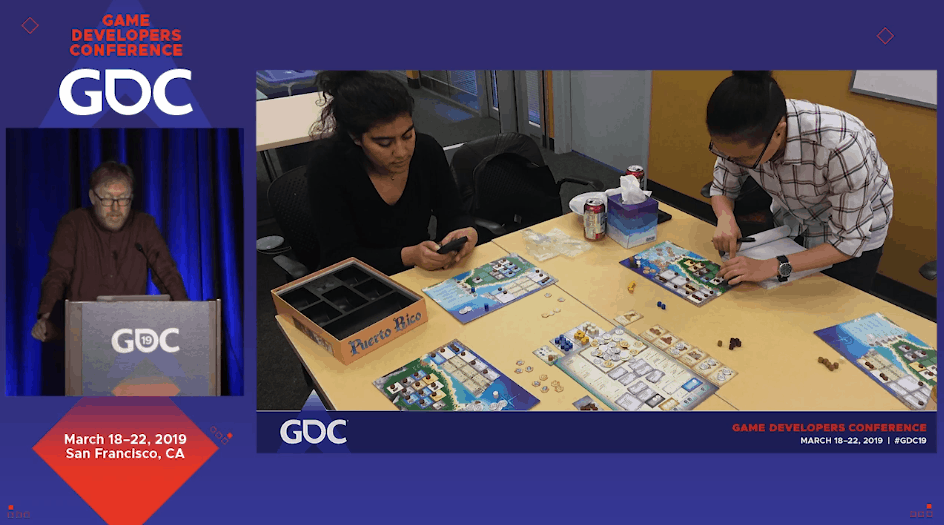
Ava: This year’s Games Developer Conference has put its board game design day talks online, with defences of King-making and non-interaction in games, and a panel hosted by someone called ‘Paul Dean’. For me, the biggest treat was the talk on cultural engagement in game design, which is an accidentally timely response to a recent furore over insensitive treatments of colonialism in games. I honestly believe board games are a great tool for bringing people together and learning, and so it’s great to see people using design to do exactly that: seeking perspectives on Puerto Rico that are more honest and informed than those found in, well, ‘Puerto Rico’.
My highlight was a hearing about the time thirteen German designers signed a beermat declaration insisting that their names get onto the box of any board game they designed. This act of solidarity was a turning point in the history of the hobby, encouraging people to see games as authored and giving fans the ability to keep track of favourites. This can still be felt in the way we talk about games today, I still remember the time someone asked me in a pub toilet(!) who my favourite game designer was, an awkward moment that simply couldn’t have happened without that beermat.
Mikael Jakobsson wonders if designers could make a new demand: to only make games about a culture in consultation with people from that culture. I’d love to see this sort of shift in approach become common, if only because I really hate having to kick off so many games with apologies for terrible representation.
Quinns: After hearing me defend several insensitive board games rather zealously, my wife gave me a useful yardstick for this. If a board game has a questionable depiction of a particular group, you can simply ask yourself “Would I be comfortable putting this in front of [someone from the same group]?” If the answer is “…Actually, maybe not,” then you’ve identified a problem. It’s a technique I now use all the time.
Ava: And that’s precisely what’s great about doing the cultural engagement work when you’re making a game. Getting to answer that question while you’re still designing the game can only make things better.

